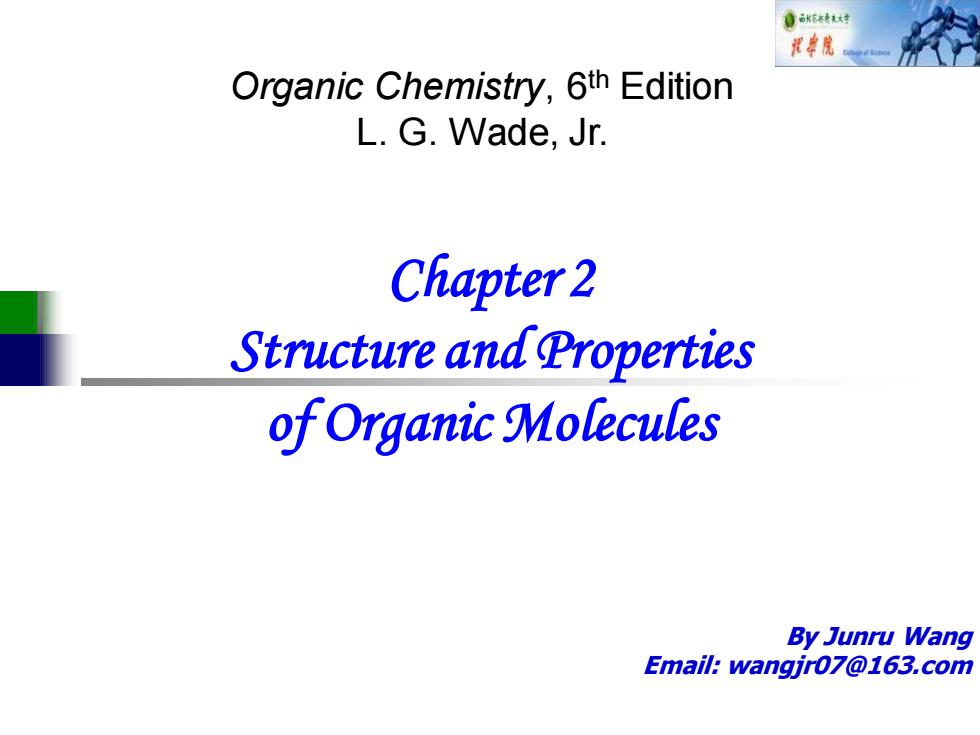
自秋不转大对 花华就 Organic Chemistry,6th Edition L.G.Wade,Jr. Chapter 2 Structure and Properties of Organic Molecules By Junru Wang Email:wangjr07@163.com
By Junru Wang Email: wangjr07@163.com Chapter 2 Structure and Properties of Organic Molecules Organic Chemistry, 6th Edition L. G. Wade, Jr
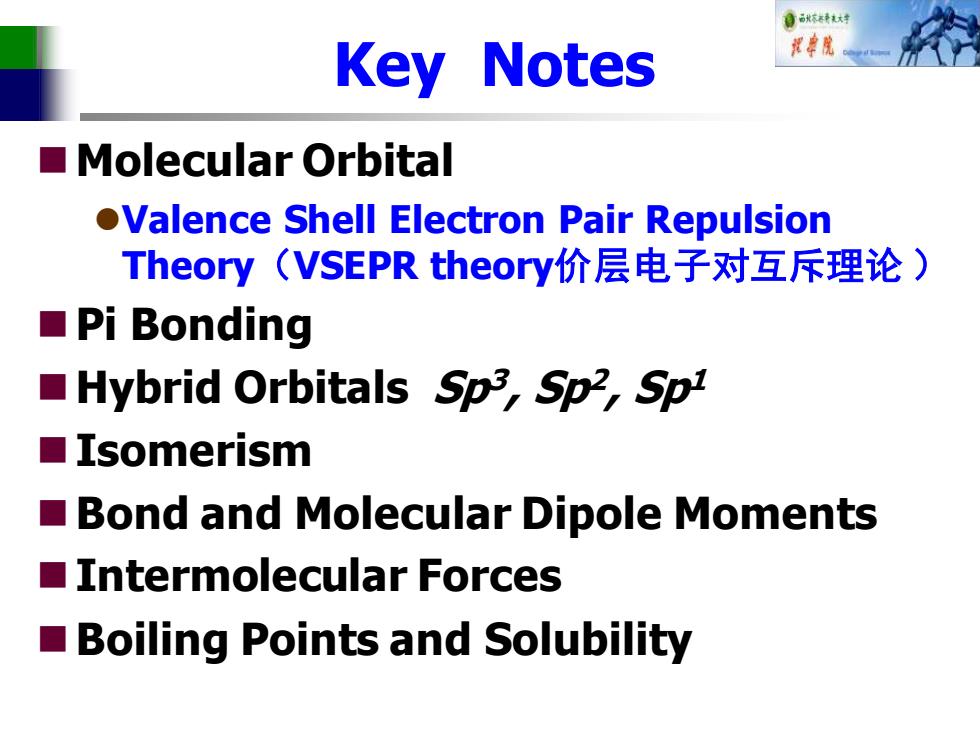
自秋不转大材 Key Notes ■Molecular Orbital oValence Shell Electron Pair Repulsion Theory(VSEPR theory价层电子对互斥理论) ■Pi Bonding Hybrid Orbitals Sp3 Sp2 Sp ■Isomerism Bond and Molecular Dipole Moments Intermolecular Forces Boiling Points and Solubility
Key Notes ◼Molecular Orbital ⚫Valence Shell Electron Pair Repulsion Theory(VSEPR theory价层电子对互斥理论 ) ◼Pi Bonding ◼Hybrid Orbitals Sp3 , Sp2 , Sp1 ◼Isomerism ◼Bond and Molecular Dipole Moments ◼Intermolecular Forces ◼Boiling Points and Solubility
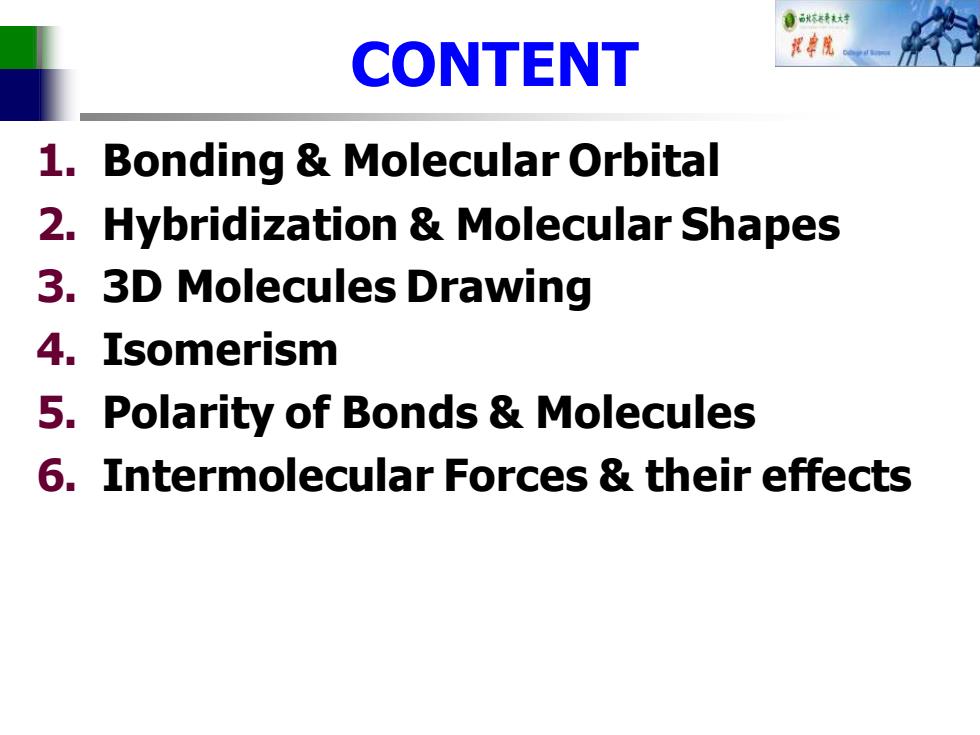
自秋水特 CONTENT 教华魔 1.Bonding Molecular Orbital 2.Hybridization Molecular Shapes 3.3D Molecules Drawing 4.Isomerism 5.Polarity of Bonds Molecules 6.Intermolecular Forces their effects
CONTENT 1. Bonding & Molecular Orbital 2. Hybridization & Molecular Shapes 3. 3D Molecules Drawing 4. Isomerism 5. Polarity of Bonds & Molecules 6. Intermolecular Forces & their effects
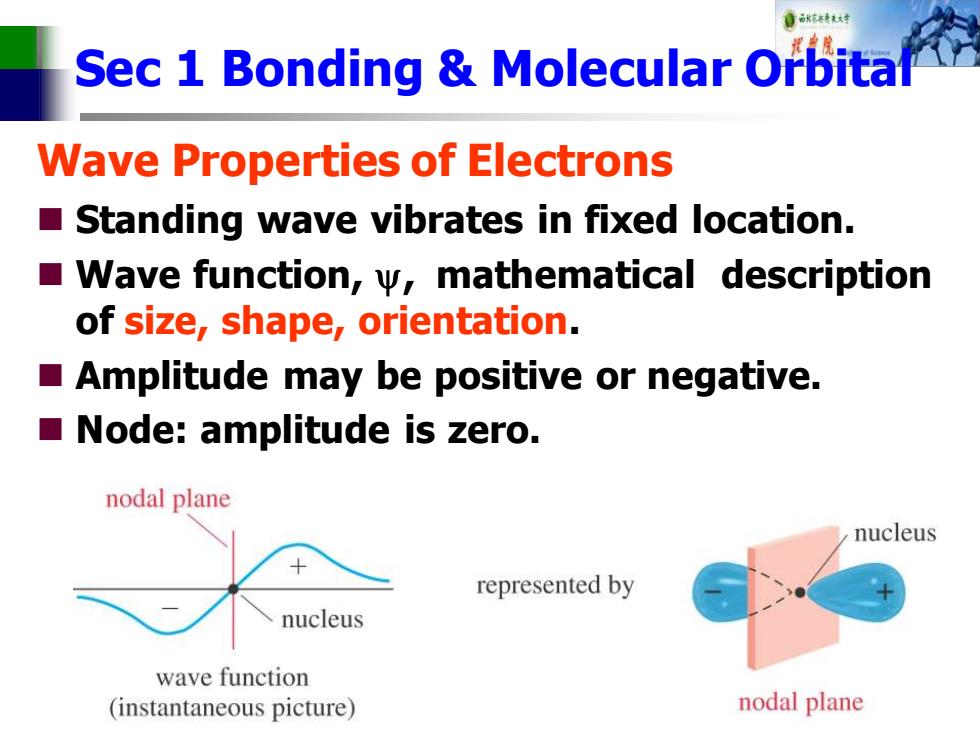
自秋特大材 Sec 1 Bonding Molecular Orbita Wave Properties of Electrons Standing wave vibrates in fixed location. ■ Wave function,w,mathematical description of size,shape,orientation. Amplitude may be positive or negative. Node:amplitude is zero. nodal plane nucleus represented by nucleus wave function (instantaneous picture) nodal plane
Sec 1 Bonding & Molecular Orbital Wave Properties of Electrons ◼ Standing wave vibrates in fixed location. ◼ Wave function, , mathematical description of size, shape, orientation. ◼ Amplitude may be positive or negative. ◼ Node: amplitude is zero
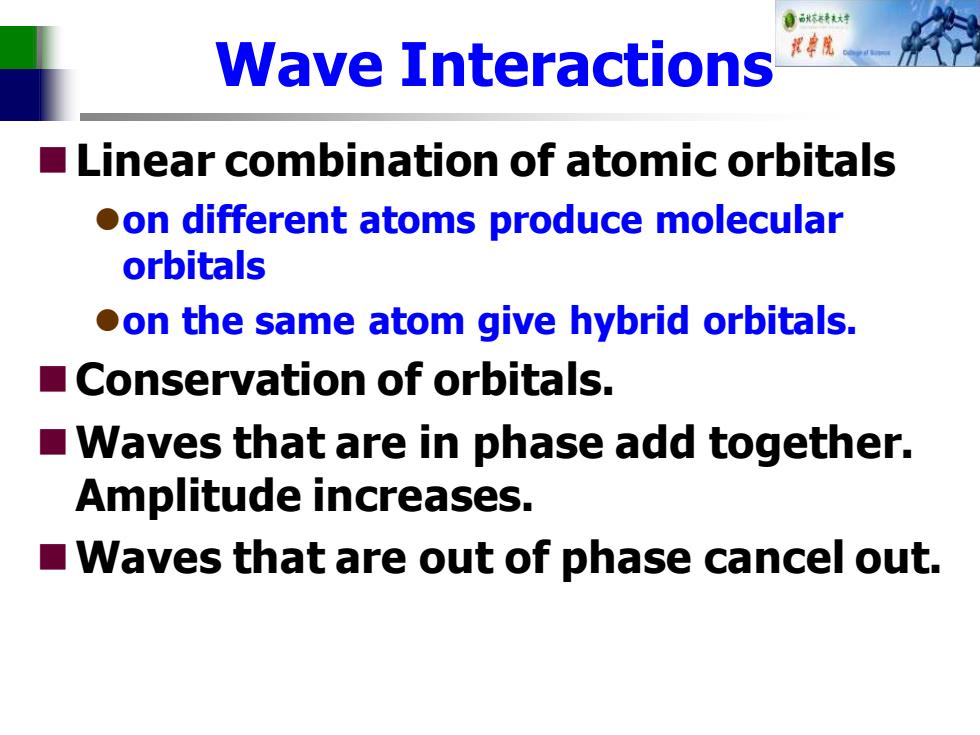
Wave Interactions Linear combination of atomic orbitals oon different atoms produce molecular orbitals oon the same atom give hybrid orbitals. Conservation of orbitals. Waves that are in phase add together. Amplitude increases. ■ Waves that are out of phase cancel out
Wave Interactions ◼Linear combination of atomic orbitals ⚫on different atoms produce molecular orbitals ⚫on the same atom give hybrid orbitals. ◼Conservation of orbitals. ◼Waves that are in phase add together. Amplitude increases. ◼Waves that are out of phase cancel out